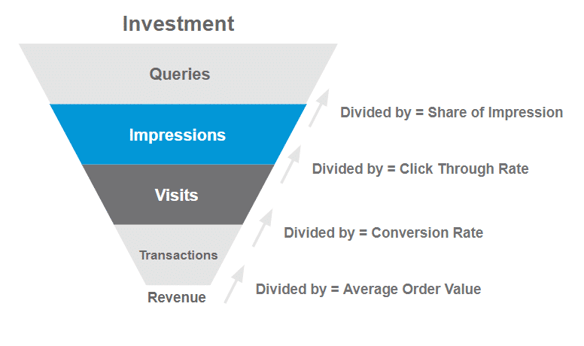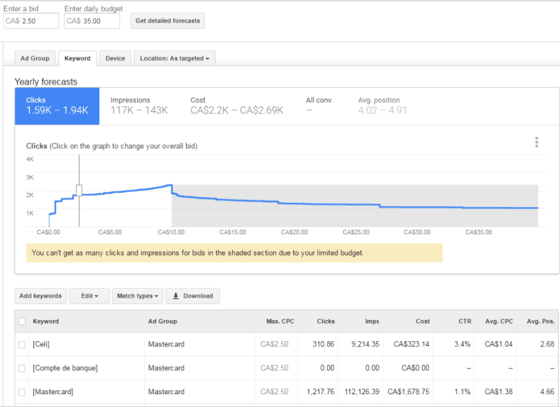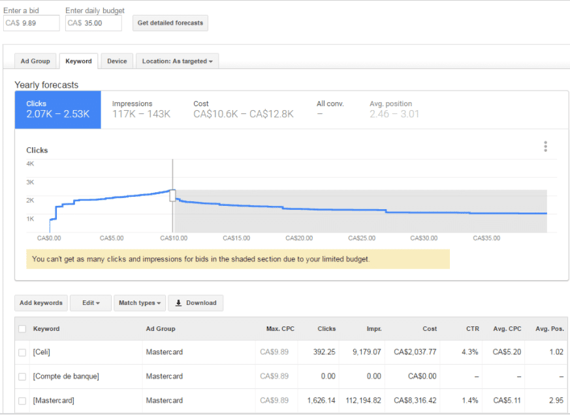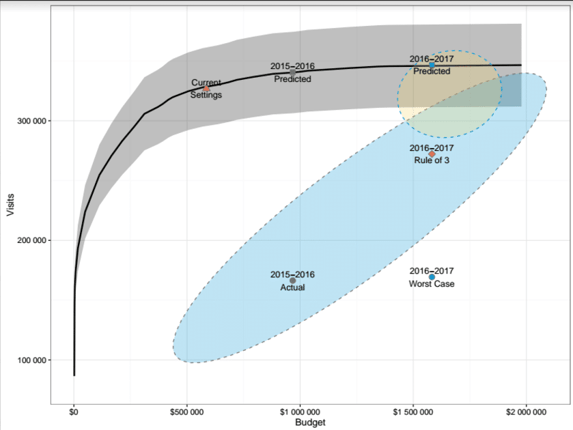Team Lead Data & Intelligence
How to bid with maximum efficacity : the Go Play In Traffic method
Team Lead Data & Intelligence
Based on internal reporting at Adviso, 54.3% of our clients in the process of being onboarded do not have any bidding rules set. Consider the fact that this number even excludes the “maximize for clicks” bidding strategy, and this becomes alarming, albeit not entirely surprising.
Throughout conferences, presentations, and workshops, we have had to explain the necessity of understanding bidding to Account Managers. Usually, we could refer to their strategy as being the wild ass guess bidding strategy.
An ad auction will always have a guessing component : it’s intrinsic to the act of bidding. But, it is possible to add a bit of science to the process, thus developing a scientific wild ass guess.

The process can be broken down in four steps :
- Know your worth
- Bid accordingly
- Mind your budget
- It pays to be truthful
Yes, it’s that easy.
At Adviso, we created a tool called Go Play in Traffic. We use it in addition to other bidding engines available in the market. Its job is to ensure that bidding adjustments are made to the account, following these four steps. It simulates all the possible outcomes in order to determine the best base bid to test, therefore making sure that your campaigns will start at peak efficiency, before the learning curve.
Let me walk you through it.
1- Know your worth
A large component of the guessing game played by specialists is going in the Keyword Planner and asking Google for the best bid based on the daily budget. Here’s why this technique is flawed.
To start off, you must go into the Keyword Planner and insert all your possible keywords and simulate results. You will discover that for a set bid and a daily budget, Google will point out the maximum clicks per day you could get, before reaching a decline point. This is the grey area in the above caption.
The logical assumption would be to target the maximum yield of clicks per daily spend limit.
But, following through with this assumption will lead to a big surprise. When you compare both previous performance simulations, you’ll discover that by maximizing clicks per day based on your budget constraint, you increased clicks by 25%, resulting in a 600% increase in cost.
Ouch. Deep burn.

This technique, offered by Google, does not take into consideration the actual worth of the potential visit. It treats all keywords with the same value and does not add a potential Revenue per Visit constraint. Also, we noticed that following it blindly does tend to favour Google’s revenue stream, not your actual profitability.
So, the question remains: how do you calculate Revenue per Visit?

You should first build your own version of the visual above to visualize the size of the market (queries), the share you wish to target (volume of impressions), and to estimate a ballpark CTR (here, the Keyword Planner gives useful information!). You then go to Analytics and search your conversion rate for the product, look at your average order value, and define potential revenue. Now, you have a clear picture of what you are trying to achieve. You can also divide the conversion rate in three global segments; Top funnel (information seeking), Mid funnel (comparison), and Low funnel (buying behaviour).
You are now able to use one of the two entry level ways of calculating the Revenue per Visit:

OR

In the end, both equations are equal. It’s really about preference and readily available numbers.
Should you need to explain this to someone, I suggest using the following example :
If you have 1 chance out of 100 that someone will buy your game, which is worth 500$, what is the maximum amount you would be willing to pay for each unique person you will reach?

5$ is the maximum amount you should pay for each possibility in order to get a null return on investment.
2 – Bid accordingly
Now that you have defined your worth, it’s time to determine how much you should bid.
Let’s go back to the auction formula. By now, you should have figured out that I will ALWAYS refer you back to the auction formula. Learn it. Love it. It’s the first thought you should have in the morning and the last one before you fall asleep.
Should you need a refresher course on the formula, refer to this video.
If the price you pay equals the competition Ad-Score divided by your quality, then what is the purpose of your bid? Its purpose is to correctly rank your actual interest for a specific keyword. The rest is mumbo-jumbo.
The bid depends on how much you are willing to pay, and the price is set depending on how good you are compared to the competition. If you bid more than what you will statistically win during conversion, you will ultimately lose over time. This is pure common sense.
In fact, by not bidding your actual worth, you are impairing your performance.
Here are the reasons why:
- If you overbid and reach a higher position in the auction ladder, you will end up paying more than you were initially willing to pay
- If you overbid and reached the same position you would have gained with a lower bid, you will end up paying the SAME PRICE than you would have paid with the lower bid
- If you underbid in an effort to save a bit of budget, you may end up in a lower auction ladder, resulting in potential click loss
To reiterate it clearly, your optimization time should be spent on increasing your Quality Score, and your bidding strategy should focus on determining the real worth of any clicks.
Bidding optimization is the act of increasing the precision of each potential user’s click worth. But at the end of the day, each bid should be equal to the dynamic worth of a potential visitor. Google offers many bidding solutions to help you with this; use them to your advantage. A good start would be with Smart bidding.
3 – Mind your budget
Imagine this: you have a best-selling product with a limited advertising budget, as well as 20 other less performing products, each with its own budget. What is the issue?
You are diminishing your overall transactional performance. The best-selling product should get more budget and the 20 others should get less. Simple, right?
In the following example, the blue area represents a client that used a linear bidding strategy with a daily budget set to the campaign level to ensure an equal coverage of all products. The grey area represents the optimized visits, with a level of confidence if the budget was always fully dedicated to the best performing keywords. As you can see, if you had enough budget to cover everything at 100%, you would reach the same level of performance. But let’s not kid ourselves, you don’t have enough budget for that.
4 – It pays to be truthful
Creating a battle plan following these steps is easy. But like any battle plan, it will never survive contact with the enemy. You must therefore be flexible.
Keeping in touch with the actual worth of a click, considering the time of day, previous visits, budget constraints, promotion, and so on, is complex and requires a lot of fine-tuning. Every business should use a bid optimization tool. If you don’t know how to start, Google freely offers their tools.
Here are three useful takeaways from this study about auction behaviour and truthfulness:
- Being truthful increases your performance
- Being truthful increases the social welfare
- Being truthful reduces the publisher’s profit
The social welfare is how all advertisers are faring in the actual auction. Simply put, if you over-estimate the value of your visitor, you’ll create inflation for the other advertisers. This inflation is, of course, very profitable for the publisher.
Go Play In Traffic’s bottom line is all about ensuring you put your money where it counts by being as accurate as possible. Of course, there will always be an unknown element to bidding, but by adding a firm methodology to the process, we are able to make an educated guess rather than a wild one.











